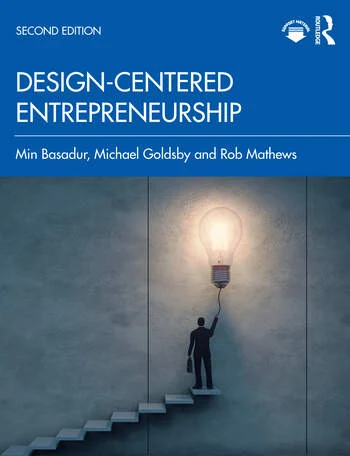Pursuing opportunities to capitalize on the problems of potential customers is at the heart of the entrepreneurial spirit. And with today’s accelerated need for continuous growth, the entrepreneurial creative problem-solving process and execution of those solutions are more essential than ever. Mastering these activities keep organizations alive and well as they deal with new market challenges.
An entrepreneurial spirit strives to resolve potential problems and improve solutions through skilled fact-finding, insightful problem definition, unbiased evaluation, and the incorporation of feedback provided by customers. Ongoing problem-solving demands tenaciousness and grit.
Level Up Your Digital Skills: Free This Week with Verizon Small Business
Let’s take a look at the complete eight-step process of creative problem-solving:
Step 1. Problem finding means sensing, anticipating, and seeking out customer problems and needs, social changes, technology trends, and opportunities for improvement that may provide opportunities to offer a new product or service. With a confident attitude, individuals and companies seek out complex problems other companies are shying away from. These leaders and teams are comfortable with “fuzzy” situations.
Step 2. Fact finding involves gathering information about a fuzzy situation without prematurely judging its relevance. Too many entrepreneurs and managers develop new products without fully considering the various aspects of a problem they’re attempting to solve. A skilled fact finder avoids unwarranted assumptions, examines a solution from a wide variety of viewpoints, listens to and accepts others’ versions of the facts, extends efforts to dig out hidden information, and shows no reluctance to ask simple questions. Establishing what is not known is as vital as determining what is known or thought to be known. Only later do they worry about choosing the most relevant facts.
Verizon Digital Ready: $10K Grants and the Skills Entrepreneurs Need
Step 3. Problem defining means composing clear, insightful challenges from a few key facts. These challenges reveal directions for solutions. Entrepreneurs skilled in defining problems can create unusual ways to view them. They can broaden the problem’s scope by asking why it needs to be solved (the intent) and narrow its scope by asking what stands in the way of solving it (the stumbling blocks). These individuals create optional ways of formulating the problem until a superior angle has been developed.
Step 4. Idea finding means creating a variety of ways to solve a defined problem. Skilled idea finders are never content with a single good idea and instead continue to hunt for more. They’re able to build on and complete fragments of other ideas. Seemingly radical, even “impossible” ideas can be turned into more unusual but workable solutions. A few of the more promising ideas are selected for evaluation and further development into possible solutions.
Step 5. Evaluating and selecting involves converting selected ideas into practical solutions. Entrepreneurs skilled in evaluation and selection consider plenty of criteria in order to take an unbiased look at the ideas. They avoid leaping to conclusions based on a single criterion or on unrelated hidden motives. Interesting but flawed solutions are creatively improved, then re-evaluated.
Sign Up for The Start: A Newsletter Built for Entrepreneurs
Step 6. Action planning means creating specific action steps that will lead to successful implementation of a solution. Individuals skilled in action planning can see the end result in a specific, concrete way that motivates people to act on the plan. Within an entrepreneurial context, Step 6 begins the process of getting the solution to market.
Step 7. Gaining acceptance means understanding even the best ideas and plans can be scuttled by resistance to change. Those skilled in gaining acceptance create ways to show people how a particular solution benefits them, and how possible problems with the solution can be minimized. Guidance will also be given as to how to gain legitimacy and credibility among various stakeholders. Effective stakeholder management can better ensure acceptance in the market when it’s time to launch.
Step 8. Taking action means “doing” the steps in the action plan, and continually revising and adapting the plan as things change in order to ensure the solution is successfully implemented. Entrepreneurs skilled in taking action avoid getting mired in unimportant details and minor roadblocks on the way to implementing the solution. They don’t fear imperfect solutions, knowing even ingenious solutions can be revised and continuously improved (think of the microwave). Action-oriented entrepreneurs know they can improve the solution as they adapt to customer feedback and learn better ways of making it work over time.
Because innovation is like a wheel, there’s actually a ninth step in the process: The first step of the next rotation. Each solution provided results in a new array of problems, customer expectations, opportunities for improvement, and competitive reactions. It’s the entrepreneurial spirit that keeps this ongoing iterative process in motion.
This article was written by Rob Mathews with Min Basadur, Professor Emeritus of Innovation at McMaster University, Canada, and founder of Basadur Applied Creativity; and Michael Goldsby, the Stoops Distinguished Professor of Entrepreneurship and Chief Entrepreneurship Officer at Ball State University. Their book, Design-Centered Entrepreneurship, Second Edition, provides a research-driven, step-by-step approach to creative problem-solving.
What Is the Average Income of a Subway Restaurant Franchise Owner?
The post originally appeared on following source : Source link

